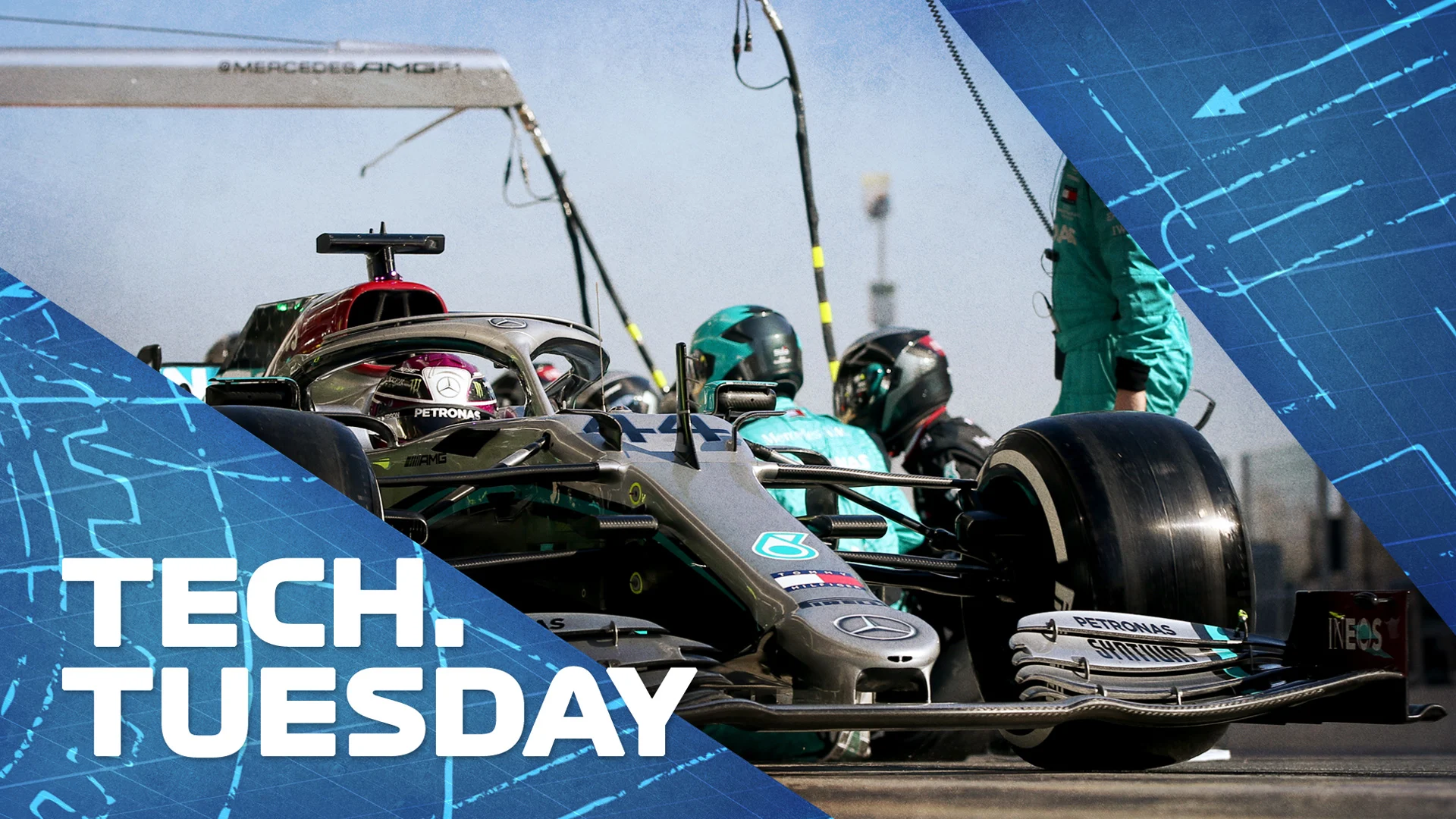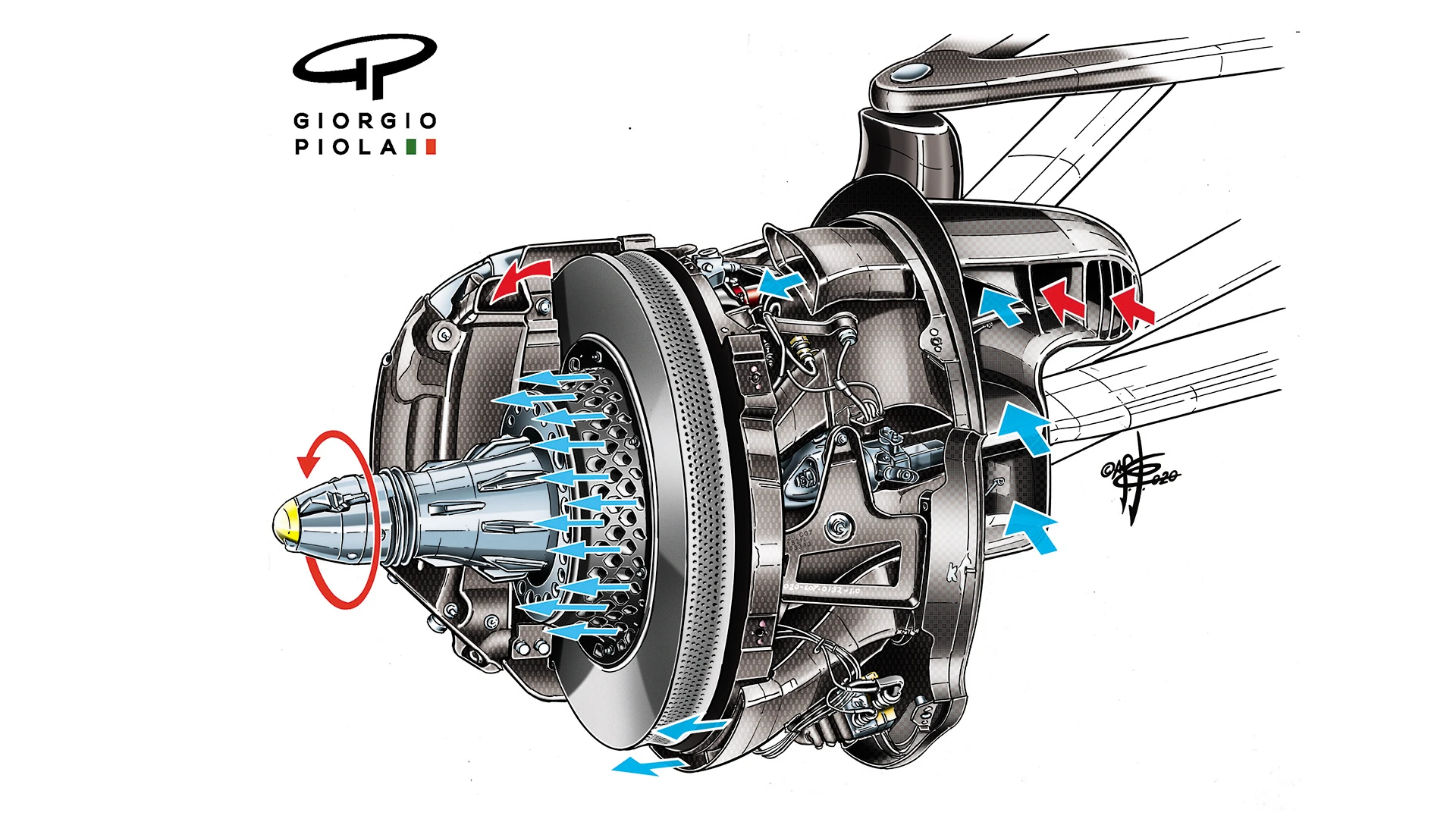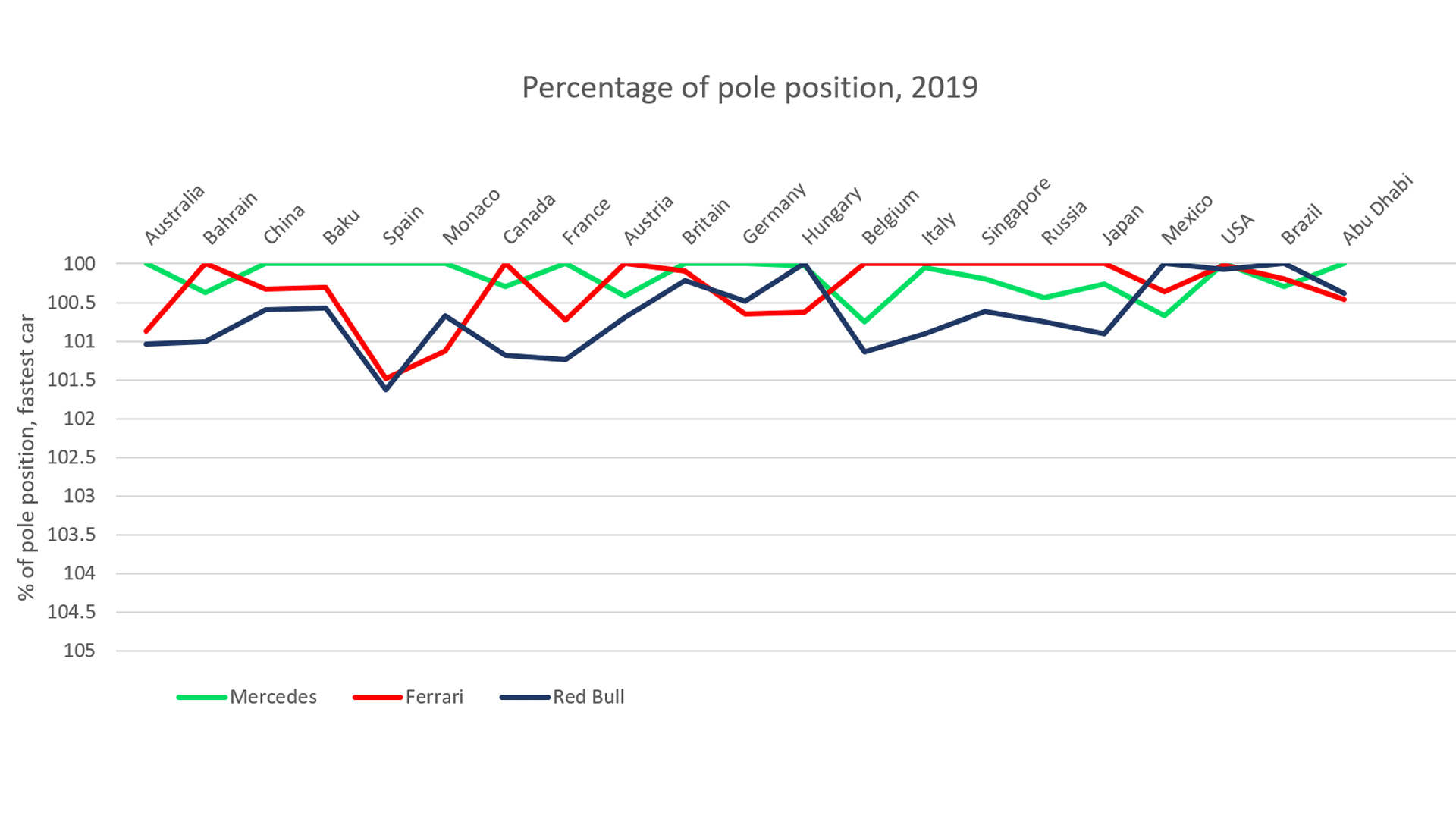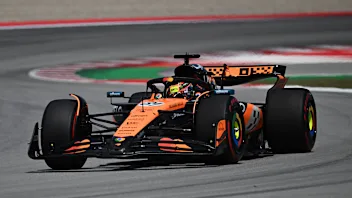TECH TUESDAY: How Mercedes' 2020 car tackles the W10's biggest weakness


Perhaps the most interesting feature of Mercedes’ 2020 F1 car, the W11, is the incredibly sophisticated airflow management around its front wheels. This is all part of increasing the power of the outwash from the wing, around the wheels and down the length of the car.
When the simplified front wing regulations came into effect for 2019, the big challenge for the aerodynamicists was maintaining good front downforce from the wing itself with adequate outwash around the wheels, now that the sophisticated endplate turning vanes and multiple under-nose vanes had been banished.
READ MORE: TECH TUESDAY – Why Ferrari have bucked the trend with their 'odd one out' nose concept
Mercedes were the most aggressive of all the teams in retaining maximum permitted front wing depth even at the outboard ends while others – notably Ferrari – strongly tapered the outboard ends, surrendering some front wing downforce in order to get good outwash.
The outwash is the flow directed around the front wheels, and which aerodynamicists try to keep pushed out well outboard of the car’s bodywork, so as not to interfere with the airflow down the bodysides and underfloor.
Inducing that outwash to stay away from the bodywork for as long as possible down the length of the car is crucial in achieving good rear downforce. But it is more difficult to achieve with full depth elements at the outboard end of the front wing.
Years ago, teams realised that blown axles – directing air from the brake ducts through a hollow axle at high pressure to exit just where the outwash was turning around the wheels – would help enormously in keeping that outwash away from the car’s body. Especially at lower speeds where the flow is not so strong.
READ MORE: TECH TUESDAY – How Red Bull forced a last-minute Mercedes design tweak
But blown axles were banned from 2019. Ever since then teams have been searching for ways to replicate the effect despite no longer being allowed hollowed axles.
Blown wheels and wheel hubs are how they are doing it now – and the blowing arrangement on the front wheels of the Mercedes W11 is quite extraordinarily sophisticated, so as to boost this effect further.

The red arrows show the air used for cooling the brake callipers. Those in blue show the flow being used to cool the discs and – through those multiple holes in the disc’s ‘bell’ which encloses the axle – for boosting the outwash.
The outwash effect is further enhanced by the carbon fibre drum surrounding the brake assembly (below).

If we look at the accompanying chart of qualifying performance, below, showing the relative competitiveness of each of the top three cars at every venue last season, we can see that the least competitive Mercedes showings tally strikingly well with the most rear-limited circuits.
The five most rear-limited tracks are Monaco, Bahrain, Montreal, the Red Bull Ring and Singapore. Of those, the Mercedes were on pole only at Monaco.

In other words, in what was otherwise a dominant season for the Mercedes W10, it was on pole in only 20% of the rear-limited tracks, compared to a 56% pole record for the other 16 venues.
That suggests, despite Mercedes having targeted – and achieved – a more rounded aerodynamic performance from the W10 in the balance between front and rear (compared to its predecessors), they remained weaker at rear-limited than front-limited tracks.
This year’s W11 looks to have targeted a further move rearwards in its aero balance but without comprising the downforce generated by the front wing, which remains at full depth across its width.
Crucial in achieving an improved flow to the rear will be boosting the power of the outwash. The sophisticated airflow management through the wheel, hub and brakes is what has made this possible.
READ MORE: TECH TUESDAY – How Ferrari were just one step behind Mercedes on DAS
Next Up
/SI202601151081.webp)

.webp)
.webp)
